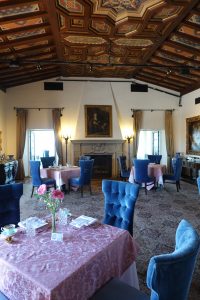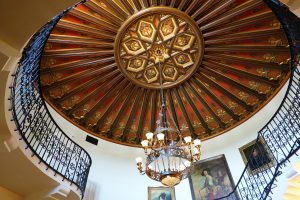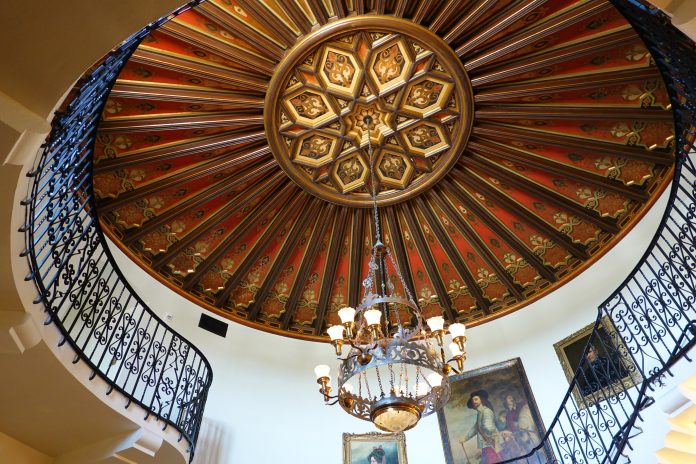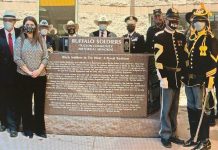Listed on the National Register of Historic Places, the Wrigley Mansion in Phoenix transcends its purely historical interest, as in fact a venue with the finest views of the city while having a fine meal or high tea.
Even though it was built by William Wrigley, of Wrigley chewing gum fame, he lived here for only a short time before dying in 1932. As a young man, William was a troublemaker, expelled from school for throwing a pie in his teachers’ face. He was put to work in a soap factory owned by his father, and by age 23 he finally escaped the drudgery of the factory to become a travelling soap salesman.
Not a very lucrative career on its own, William latched onto the idea that ‘everyone likes something for nothing.’ First, he offered free baking powder to anyone who bought his soap, but soon changed the premium to gum. Back then gum wasn’t chewed just for the sake of chewing, but more often as an appetite suppressant. To make this generic gum more appealing, he decided to create one with flavour. It became Juicy Fruit, and was soon followed by Spearmint. He commissioned a storybook to market the gum, which became a big hit with kids. As the father of direct marketing, William Wrigley changed American business and made millions. The vast Wrigley mansion in Phoenix was merely the smallest of his collection of homes across America.
William was a romantic, which is evident in many ways here. The mansion was built as a 50th anniversary gift to his wife Ada. She had a great attachment to Catalina Island, which her husband naturally bought for her: yes, the entire island, except for the town of Avalon. The island was an ideal source of clay to make tiles, so he created the Catalina Tile Company. When it came time to build the mansion in Phoenix, all the tiles were shipped from Catalina.
 Ada was of French ancestry and he was of British ancestry, so the fleur de lis for France and the lion for Great Britain alternately decorate the ceiling of the mansion’s large room (painted by Giovanni Smeraldi, shown right), and the crowns on the great chandelier as you enter have one for France (the uppermost one) and Great Britain (the largest crown). Careful observers will note the presence of another crown in the chandelier: this was the crown for Edward, the Prince of Wales, who was a friend of William Wrigley. He placed the crown there in case the Prince ever visited the mansion, but that did not happen.
Ada was of French ancestry and he was of British ancestry, so the fleur de lis for France and the lion for Great Britain alternately decorate the ceiling of the mansion’s large room (painted by Giovanni Smeraldi, shown right), and the crowns on the great chandelier as you enter have one for France (the uppermost one) and Great Britain (the largest crown). Careful observers will note the presence of another crown in the chandelier: this was the crown for Edward, the Prince of Wales, who was a friend of William Wrigley. He placed the crown there in case the Prince ever visited the mansion, but that did not happen.
Another important touch of English royalty is also visible on the circular wall above the chandelier: a portrait of King Charles I. While it is only a copy of the original now in Paris, this artwork is most important to the mansion, as the only painting still here that originally was displayed in the mansion. Why that is so remains a mystery, just remember as you walk through that all the other paintings were added long after William died. A few pieces of furniture and some books are all that remain from the early 1930s, the mansion having been transformed into a place for meetings and conventions since its purchase in 1992 by Geordie Hormel of Hormel Meats. It is said the mansion was built by gum and saved by spam! His widow currently owns the mansion.

One highlight on the guided tour is a player piano, insured for the breathtaking sum of $20 million. It is a player piano, partly built by Steinway. Listening to that in the large room where tea is now served is a delight. I do highly recommend the Afternoon Tea, featuring tea from the French firm Dammann Frères, which was founded in 1692. One thinks Ada Wrigley would approve.
Photos by C Cunningham
Visit the website: wrigleymansion.com














